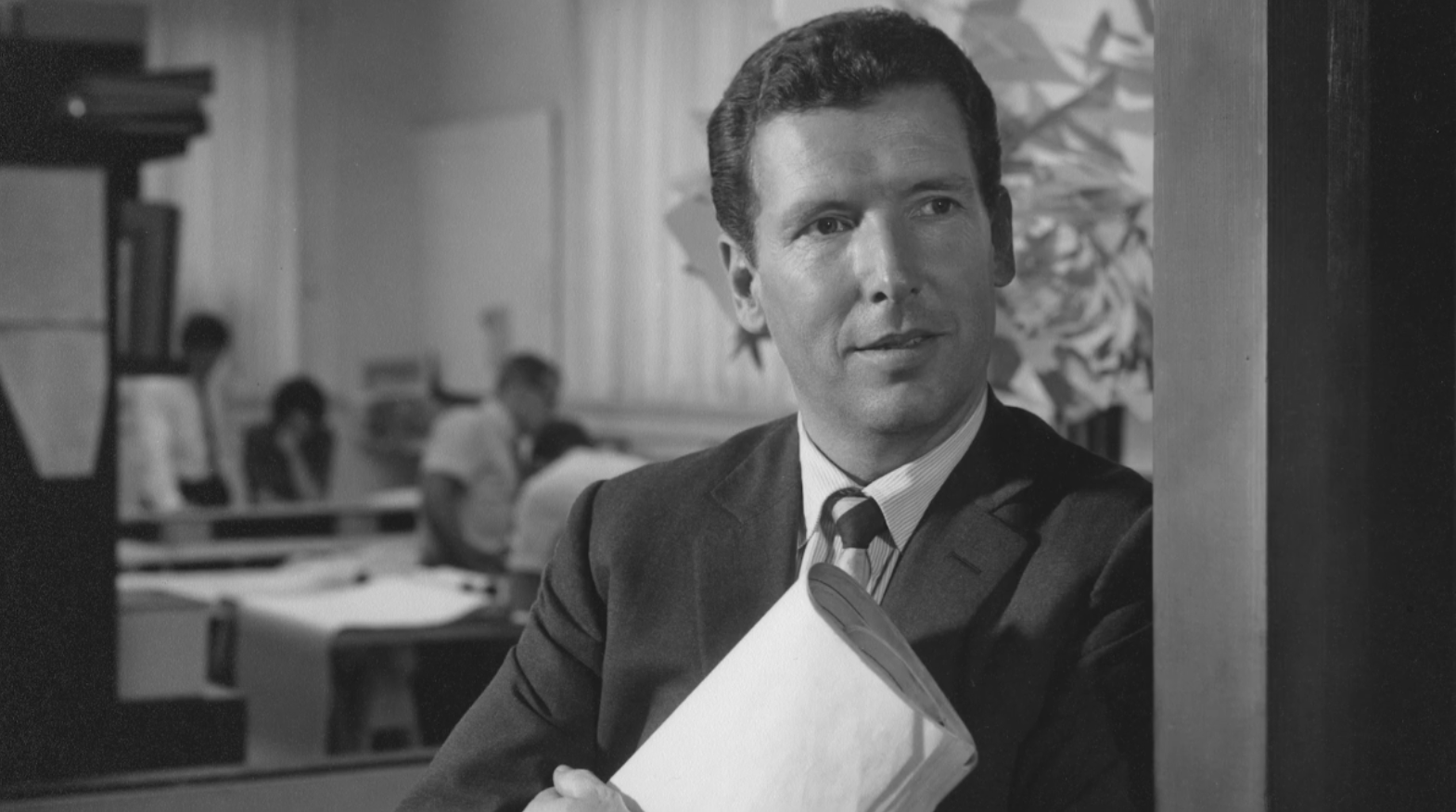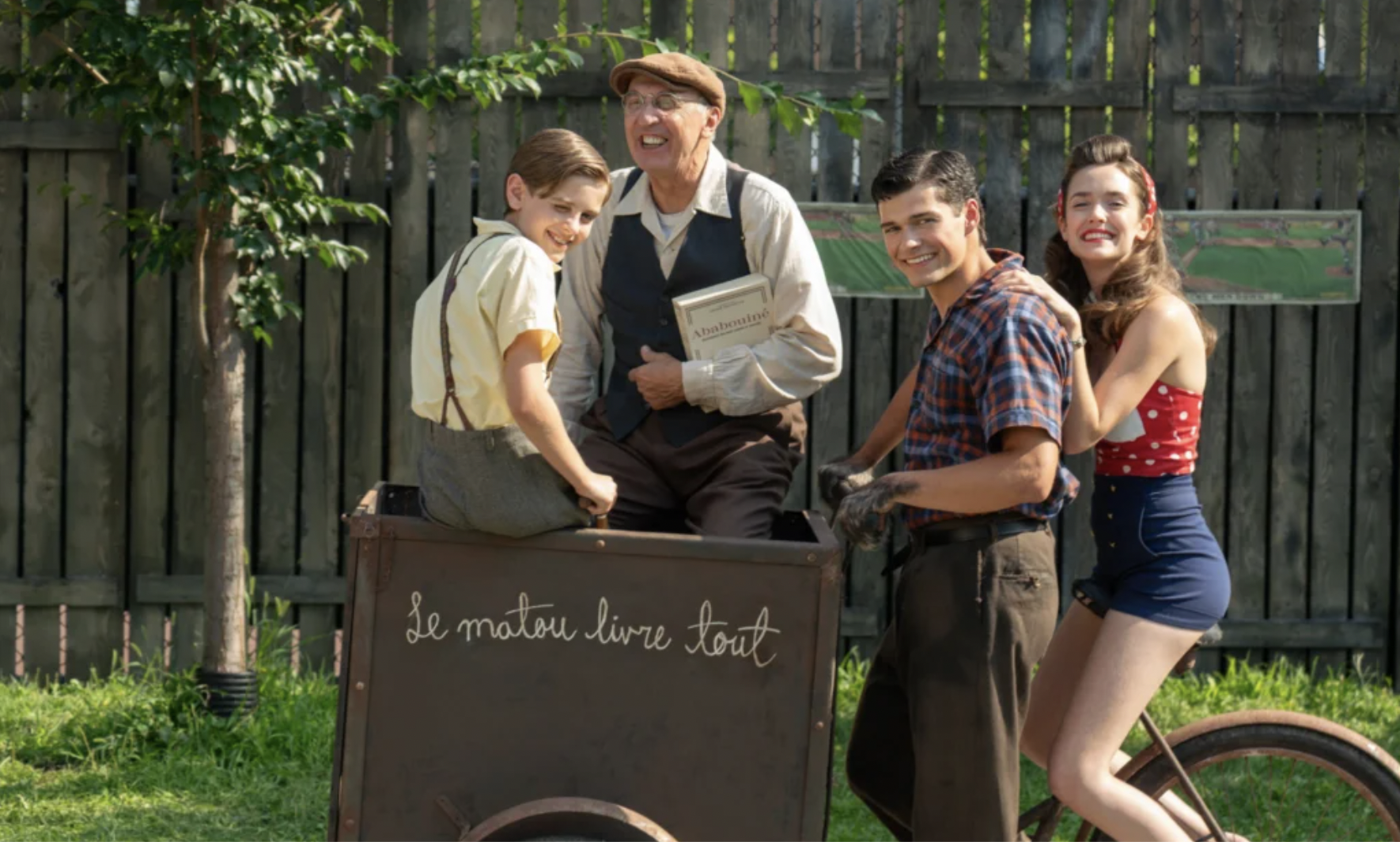New documentary about Arthur Erickson looks at the legend's professional and personal lives
Subtitled Beauty Between the Lines, film by Danny Berish and Ryan Mah digs deeper than the architect’s portfolio

Arthur Erickson: Beauty Between the Lines. Photo via Black Rhino Creative
Architecture & Design Film Festival: Vancouver presents Arthur Erickson: Beauty Between the Lines on November 6 at 6 pm at the Hollywood Theatre; November 9 at 4:30 pm at VIFF Theatre 1; and November 10 at 7:15 pm at VIFF Theatre 1. VIFF Centre presents the film from November 15 to 18, 20, 23, and 25
ARTHUR ERICKSON WAS a legend, and now he’s the subject of a new documentary by two B.C. filmmakers.
Danny Berish and Ryan Mah are the creative forces behind Arthur Erickson: Beauty Between the Lines. Kicking off the Vancouver programming of the Architecture & Design Film Festival, the release features exclusive material from Erickson’s personal archives and looks at his professional and personal lives. Some segments from the architect’s personal memoirs are voiced by an AI program, with permission from his family.
Among the interviewees in the film are writer-editor Hugh Brewster; Raymond Massey, the son of Geoffrey Massey, Erickson’s former business partner; architects James K.M. Cheng, Keith Loffler, and Nick Milkovich; artist Douglas Coupland; Emily Erickson McCullum, Erickson’s niece; and Geoffrey Erickson, his nephew.
The film travels as far back as Erickson’s days in elementary school and to the stage in his career where he had offices in Los Angeles and the Middle East; it pores over his bankruptcy, the period when he lost his licence to practice, and his lack of money, despite his tremendous success; and it delves into his relationship with the love of his life, interior designer Francisco Kripacz. There are scenes from the heady ’70s at Erickson’s beachfront home on Fire Island, a preeminent gay resort in New York. The film divulges how tight Erickson was with former Canadian Prime Minister Pierre Elliot Trudeau, and looks at the ravages of AIDS on his community. He once told a friend that being gay was bad for business. The work touches on his dementia and final days in a nursing home. It all paints a portrait of a man who greeted life with kindness, humour, insight, and acceptance.
Among the projects that the film covers are coups like Simon Fraser University, the Museum of Anthropology (MOA), Robson Square, and the Vancouver Law Courts, as well as residences such as the Filberg House, Catton House, Dyde House, Graham House, and Killam-Massey House. There is footage of the Canadian Government Pavilion at Expo 70 in Osaka and of the MacMillan Bloedel Building, among many others.
“I’m originally from Montreal, and it might be hard to believe but before moving here I had never heard of Arthur Erickson before,” Berish says in a phone interview with Stir. “Our office was right by the Waterfall Building, and I loved spending time at Robson Square and I loved going to the MOA. When I found out that all those buildings, the throughline was Arthur, I thought that was incredible.
“Everyone who speaks to his architecture and design talks about his love of incorporating nature, and his ability to lay a building in harmony with the site. But I thought what was interesting was as much harmony as he made with the site, he was also able to change the overall context of a place. The Law Courts and Robson Square really define the downtown core; it’s not just about one’s experience going through the buildings, but how it changed the overall context and the space. So we were motivated to make the documentary.”

Arthur Erickson. Photo via Black Rhino Creative
Adds Mah: “I think most documentarians are always struggling for archival material, but there was an endless amount, from his personal letters to personal photographs, passport photos, stuff no one had ever seen, and we had the blessing from the family so it just made sense to make it.”
While there have been other documentaries made about Erickson, most have focused on his portfolio and his building philosophies, and not his private life.
“It’s really a love story,” Mah says. “The love for architecture, but also the people he worked with, and most importantly his lifelong partner who has seldom been mentioned in the media. That’s who we really wanted to focus on. Francisco also had a really creative influence on Arthur. Especially in his later years, you can see their styles merge together, and they worked really well together.” ![]()
Gail Johnson is cofounder and associate editor of Stir. She is a Vancouver-based journalist who has earned local and national nominations and awards for her work. She is a certified Gladue Report writer via Indigenous Perspectives Society in partnership with Royal Roads University and is a member of a judging panel for top Vancouver restaurants.
Related Articles
A panel discussion with workers and community advocates takes place after the VIFF Centre screening
Mareya Shot Keetha Goal: Make the Shot won a spot as best B.C. feature, plus much more as Surrey-based event hands out cash and development support
Moving from architectural marvel to frozen cabin, the film mixes bitter humour with a poetic fugue fuelled by familial trauma
Vancouver director Ben Immanuel drew from his acting students’ real experiences to craft a funny and poignant collaborative film that was years in the making
Program includes Vancouver premieres, returning classics, and a tribute to Tracey Friesen and free screenings on National Canadian Film Day
New paraDOXA initiative will highlight experimental films like To Use a Mountain
Director Mahesh Pailoor and producer Asit Vyas tell the impactful true story of a young man diagnosed with terminal cancer
In Aisha’s Story, a Palestinian matriarch uses food for generational healing, while Saints and Warriors follows a Haida basketball team
Event presented by SFU School for the Contemporary Arts features a screening of In the Garden of Forking Paths
First-time film actor Keira Jang takes a leading role in Vancouver director Ann Marie Fleming’s dark “satire” about a bucolic post-collapse future that comes with a catch
Stunning cinematography and a compelling story make documentary about freediver Jessea Lu a breathless watch
At The Cinematheque, Nanos Valaoritis’s memories of a long life in poetry are like a museum you never want to leave
Program includes Boy on a Dolphin, The Travelling Players, On the Waterfront, and more
Sepideh Yadegar’s film tells the story of an Iranian international student photographed at a Women, Life, Freedom protest in Vancouver
The series presents 14 titles by the master of nonfiction film, rarely seen in the cinema
Housewife of the Year unpacks a long-running Irish TV show, while There’s Still Tomorrow follows a working-class Italian woman in the 1940s
Director Sepideh Yadegar’s debut feature follows Iranian international student Sahar as she stands up for women’s rights in Vancouver
At Vancity Theatre, Christopher Auchter’s film takes us back to the 1985 protest that led to a historic win
La Femme Cachée faces buried trauma; En Fanfare celebrates the power of music; and Saint-Exupéry tells an old-style adventure story
Sweeping biopic returns with nostalgic songs and atmospheric cinematography
Second-annual event opens with Mahesh Pailoor’s Paper Flowers and closes with Enrique Vázquez’s Firma Aquí (Sign Here)
A Real Pain’s Jesse Eisenberg and Anora’s Sean Baker among international award-winners to send in acceptance videos for event at VIFF Centre
At The Spirit of Adventure opening event, the film “The Beginning” captures the Squamish resident’s record-breaking feat at Goat Ridge
Korean-born, B.C.-raised filmmaker’s Maple Ridge-shot first feature centres around a Korean family struggling with grief
Program opens with Charles Aznavour biopic Monsieur Aznavour and closes with Antoine de Saint-Exupéry tribute Saint-Exupéry
At the Orpheum, biologist Doug Smith shares stories from reintroducing the animals back into the national park and observing their complex behaviours
Opening La Tournée Québec Cinéma, nostalgic comedy mixes with church abuse of power in a Montreal neighbourhood
The two join nearly 60 artists from around the globe at the New York laboratory for the arts
Titles span music documentary Play It Loud featuring Jamaican-born Canadian singer Jay Douglas, 1974 Afrofuturist film Space is the Place, and beyond
Touring French film festival brings three titles to Alliance Française Vancouver with special guests Éric Bruneau and Yan Lanouette Turgeon
































